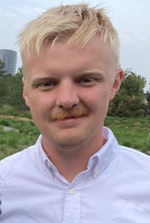On November 13, the integrated photonics and quantum optics technology company Quantum Computing Inc. (QCi) announced that it has received the first order for its thin film lithium niobate (TFLN) photonic chip foundry. QCI says the order, placed by an Asia-based research and technology institute, highlights the demand for TFLN fabrication technology and underscores the company’s ability to produce high-performance photonic integrated circuits (PICs) and nanophotonic devices.
As part of the order, QCi will also provide in-house photonic chip design services, including two separate fabrication runs.
Dr. Pouya Dianat, director of PICs and Foundry Services at QCi, said the order reflects growing global interest in TFLN technology.
“By integrating TFLN into our own quantum technology, we are able to enhance the precision and performance of our systems, and QCi is proud to play a critical role in the future of integrated photonics,” said Dianat in a press release. “We anticipate additional orders in the coming months as the photonics community continues to embrace TFLN and prepares for the exciting opening of the QCi Foundry in Tempe, Arizona.”
According to QCi, modulators built using TFLN are highly efficient: capable of operating with an extremely high bandwidth while consuming little power. In a policy paper published in May, the company reported that the market for TFLN, which stands at $190 million, is projected to grow at a CAGR of 39.2%, reaching more than $1.9 billion by 2029.
The QCi Foundry will open in Q1 2025, and the company says it will be capable of producing over $180 million in sellable product in its first full year of production.
For related articles, visit the Business Topic Center.
For more information on high-speed transmission systems and suppliers, visit the Lightwave Buyer’s Guide.
To stay abreast of fiber network deployments, subscribe to Lightwave’s Service Providers and Datacom/Data Center newsletters.

Hayden Beeson
Hayden Beeson is a writer and editor with over seven years of experience in a variety of industries. Prior to joining Lightwave and Broadband Technology Report, he was the associate editor of Architectural SSL and LEDs Magazine.
